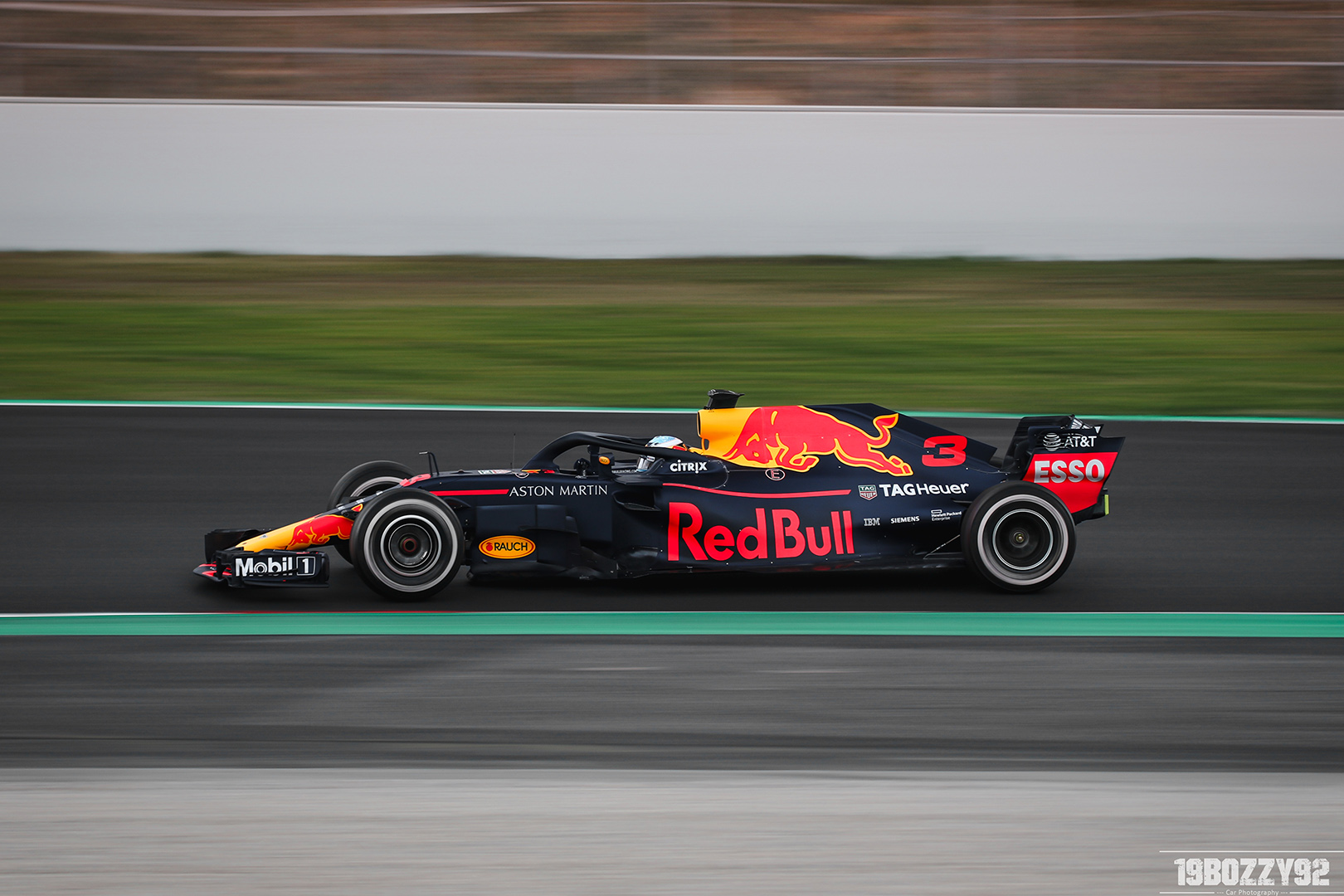F1 2018 Winter Testing in Spain

After last year’s beautiful experience, I decided to come back to Barcelona for the 2018 F1 pre-season winter tests: 2 sessions, 4 days each, where teams and drivers have the task to evaluate the quality of their winter development work before the first race in Australia.
For some seasons now, Circuit de Catalunya is the chosen venue, located in the small town of Montmelò around 20km far from Barcelona, perfect for the Circus both for the mild weather and transportation and logistic costs.
My trip started on Monday January 26th, actually the first day of the first testing session, and I came back home the 28th. The plan was a two-days stay entirely focused on the F1 in the Spain’s warmth of the end of February. But unfortunately an anomalous Siberian frost hit the whole Europe, bringing cold and snow in the Catalan capital too.
If last year the thermometer touched 18-20 Celsious degrees, this year I had to film in a barely bearable cold and humid climate. This was the situation on Wednesday before coming back to Italy.
Despite this, I love test days and I will always love them. Why? Simple: during race weekends it’s nearly impossible to admire these machines running for 8 hours, doing more than 100 laps during a single day. And also because it’s a great chance for the fans who have the opportunity to observe all the technical innovations introduced by the teams for the new season.
For 2018 the most striking is the Halo, a mandatory safe device for drivers wanted mainly by FIA. It is a titanium bar linked to the chassis in 3 points (very similar to a flipflop), designed by Mercedes and produced by an external supplier and not by the teams themselves.
I avoid to mention all the critics it has already received. I’d rather it wasn’t installed on the car, but just for and aesthetic aspect than functional. But I have to admit that thanks to the colours and liveries from some particular angles you didn’t even noticed its presence.
Curious is the fact that some teams preferred to leave it stock, others tried to introduced an aerodynamic component on the top of it, some others both solutions.
You may like or hate the front of the current F1s (considering both the Halo and the curious front nose design), but thanks to the rules introduces in 2017 giving the cars bigger wings and wider tires the view from the back is something wonderful.
The sound produced by the Power Units isn’t bad at all too: with the exception of the 2014 season, when V6 turbo-hybrid were introduced, the noise have really increased in the last 4 years and you can distinguish the sound of the 4 engines constructors even without seeing the cars. The noisiest PU is the Mercedes’s one for sure, followed by Ferrari’s, Renault’s and Honda’s one, which however has a unique raspy sound on off-throttle, with the pedal a little bit pushed.
Oil burning, or “oil as a fuel”, became a sensitive issue last year. In this F1 Hybrid era in which fuel and consumptions are under a spotlight and so strictly regulated, engineers immediately started to find alternatives to reduce fuel consumption and increase engine’s performances. The solution was to create lubricants rich in additives, inject them in the combustion camber and accordingly improve it. Roughly said they are similar to 2 stroke engines.
This year they regulated the consumption of oil too, and immediately we noticed some particularities such as a small amount of white smoke coming from the back of the Ferrari-powered cars, right under the rear LED. That is oil and lubricant steam coming out straight from a venting can.
2018 is an important year for partnerships and engine suppliers. McLaren and Toro Rosso have made an engine exchange between them: Honda’s PU has been taken by the team from Faenza, instead under McLaren’s hood there’s now a PU produced by Renault.
Alfa Romeo made a big F1 comeback too, even if it’s a simple commercial partnership with team Sauber.
While at the end of this year we have to say goodbye to Martini’s livery and logo, ending the sponsorship with Williams and having chosen to depart from F1.
Talking about Williams Racing, Sir Frank chose Robert Kubica as their third driver for the 2018 season. It was amazing to see him in action again during these tests, after his renowned crash that changed his life and racing career.
I don’t have anything special to report regarding which car impressed me the most, mainly because drivers were forced to go on track also with wet tyres, bothdue to the low temperatures and due to rain drops and snow flakes during the afternoon of the first two days.
As usual, Mercedes, Ferrari and Red Bull looked a step ahead, followed by Haas and Renault. McLaren and Toro Rosso are the two real gambles, while Sauber, Williams and Force India look like they have to work hard before the start of the season.
I’m really happy to having planned and completed this trip. At the moment I’m so curios to see what will happen during the 2018 season. My cheer is always for the Italian team, but I would bet again for Mercedes. Concerning liveries and colors for me Toro Rosso and Force India won this year!
I’m gonna close this article with the general video of my 2 days in Montmelò. Hope you like it!
Barcellona Catalunya F1 F1 2018 F1 2018 Test F1 Test ferrari Force India Formula 1 Haas Honda McLaren Merceds Motorsport Pirelli Pre-Season Test Red Bull Renault Sauber Scuderia Ferrari Single Seater Test The Marbles Toro Rosso Williams



























